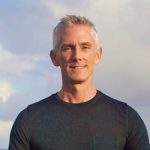Let it Flow: The Hawaii Yoga Festival
The Yoga Coast on the Big Island of Hawai'i boasts some of the newest land on earth. This island is home to one of earth’s most active volcanoes, and it is nothing short of profound to stand and watch Mother Earth as she gives birth to the land itself.
Stunning in its beauty, one stimulating visual along this coastline is the way in which massive, translucent blue waves collide against the vibrant conservation shoreline, for no reason other than what might be interpreted as a celebration of exuberance.
As we assemble for the Hawai'i Yoga Festival in early November, yoga teachers and students will quickly connect to a deeper sense of self—the root chakra—as we engage in our practice on this powerful new land. As I prepare to teach at the upcoming festival, I am reminded of the common wisdom found in both cultures.
In Hawaiian culture, kahea, or chanting, is a prayer. It is believed that chanting with intention affects reality, and songs are sung to the heavens and beyond on a daily basis. The familiar “E Ho Mai” chant is used often in daily life and sacred ceremony alike to encourage non-attachment. Translated, it means, “let it come and let it flow,” and reminds us to allow the flow of life while staying unattached to its offerings.
In yoga culture, this same concept is seen with vairagya, meaning non-attachment, a core principle of practice. If we are to achieve Self-realization, the Yoga Sutras state that we must show up for a disciplined practice without attaching to its outcomes, always a delicate balance for any dedicated student.
Another commonality is focus on the breath. The word “Ha” means “to breathe,” and is a foundational theme found in many words. Aloha, for example, is a greeting of love and affection. It contains the root “alo” meaning face or presence, and thus when combined means more literally “to breathe together.” This reflects the ancient custom of greeting others by putting foreheads together and breathing, a custom still practiced today. Also, the word Hawaiʻi itself is translated as “land of breathing waters,” and is thought by many to be a reference to the human body, which can be seen as a body of (mostly) water that breathes.
Likewise in yoga, the foundation of our practice is the breath. We understand that there is a power and wisdom that comes from staying with our breath. We learn to follow the present moment with our breathing just as a surfer might follow the crest of a wave along the shoreline, because it is in the present moment that we find our liberation.
Given the natural beauty that envelops us in Hawaiʻi, is it the land that teaches such wisdom? Perhaps. But in both cultures, it is also a choice of the people to interpret the land and find wisdom and guidance in her beauty. I look forward to learning from Hawaiian teachers at the upcoming festival, while savoring the beauty of this natural island oasis, where some of the cleanest recorded air on earth activates the senses, and the lush, green jungle softly reassures us of our own eternal spring.
Join Will Donnelly at the Hawaii Yoga Festival, from November 9-12. Photograph courtesy of Kalani Retreat Center.


